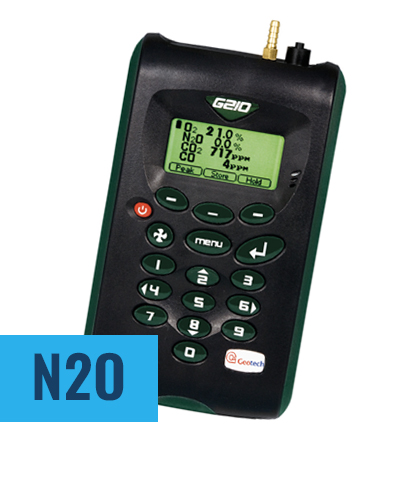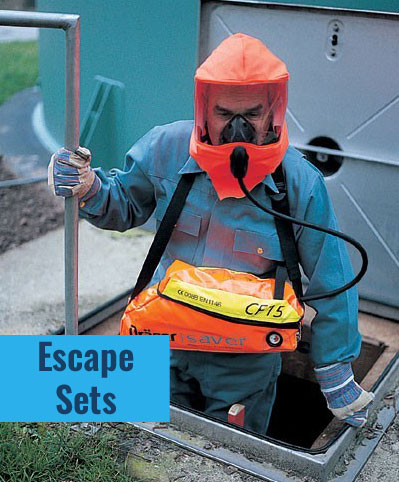View by Product Type
-

GA5000
-

G150
-

G200
-

G210
-

Aranet4 Pro – CO2 COVID Ventilation
-

Aranet4 – CO2 COVID Ventilation
-

Drager Saver CF10, Escape Sets
Gas detectors: fixed versus portable
Flammable and toxic gas detectors are generally available in two formats – portable and fixed. Which version is right for you will depend on the specific application, but there are several factors worth bearing in mind.
What type of gas is it? What’s the source of the gas? Is it toxic, flammable or both? Or perhaps the issue is possible oxygen depletion or enrichment? Is the hazard temporary or chronic? Do many people work in the affected area and are they trained to use portable gas detectors? Is it a confined space or well-ventilated and out in the open? Any of these might be important and deciding on the right monitoring solution is far from trivial.
Understanding the requirements for each site will provide an informed judgement as to whether fixed or portable gas detectors are best suited for the application. In some cases a solution incorporating a mixture of fixed and portable monitoring will be advisable.
Fixed gas detectors
Xgard
Fixed gas detectors are permanent fixtures that stay mounted in one location. They can be set up in single-detector configurations, in small and large multiple-detector configurations and in an addressable ‘daisy chained’ loop. Fixed gas detectors are generally installed in larger spaces and can detect major leaks or give an early warning of gas leaking from a particular source. They are often set up to trigger other safety measures, so they can open vents, start fans, close valves or even shut processes down automatically once they detect a problem. They can also set off alarms to begin an evacuation.
On the other hand, fixed gas detectors can only detect gas that diffuses into them, so they may not detect a localised leak quickly enough to prevent a worker coming into contact with the gas. They are also more expensive than portable detectors and require a mains power supply.
Each fixed gas detector will need to communicate with a control panel. The control panel is the hub of the fixed gas detection system, which provides various options for input and output functions. The gas control panels are normally located in a safe area but can be installed in hazardous zones. They communicate with gas detection sensor heads or transmitters and can be networked to a central point so that multiple control panels/systems can be monitored remotely.
There are multiple methods of communicating with fixed gas detectors. The most common is analogue, but there is a growing demand for digital and wireless communications.
There are also various features available via the detector to improve efficiency and reduce the time spent and risk in potentially hazardous locations.
Portable gas detectors
Gas-Pro
Portable gas detectors are personal protection devices that continuously monitor the user’s breathing zone. Because they are so small and flexible, these handheld, lightweight and robust devices are also sometimes used to check confined spaces such as tanks, before someone enters the space. However, they are intended for monitoring at close range and are not suitable for continuous monitoring of larger spaces.
Portable gas detectors are the safest way to protect individual workers as they move around. Some can even keep track of an individual’s exposure over a shift, where they might be at risk from chronic exposure to low doses of a toxic gas, rather than at acute risk of asphyxiation, for instance.
Portable detectors store information on gas exposure throughout the duration of a shift, as well as events such as alarms or near misses. This data can be transmitted to a cloud-based portal to allow for numerous benefits such as improved operational efficiency and safety compliance, as well as providing a robust and flexible mechanism to deliver valuable actionable insights. Data solutions offer tangible benefits to all sizes of portable fleet, whether gas detectors are being used onsite, offsite or both.
Portable gas detectors typically cost less than fixed systems and most are battery powered.
On the other hand, each user must be properly trained to operate their portable detector. In addition, portable detectors are not typically connected directly to other safety systems. If the detector raises an alarm, the user is therefore left to take action on their own to mitigate any risk to themselves or others.
Which one is right for me?
The following checklist, though not exhaustive, can help guide your decision.
What type of hazards are you dealing with?
Understanding the dangers associated with the specific gases that may be present is critical. Do you need 24-hour monitoring to protect against explosive atmospheres, for example, or do you need to protect workers from possible asphyxiation by checking the atmosphere immediately around them as they move around the space?
What’s the source of the problem?
Can you identify the specific points where a leak might occur? Or perhaps the gas is generated during a specific activity or process? Might the hazard migrate to cause a problem remotely, such as a heavier-than-air gas pooling in low-lying areas?
Is the hazard a one-off or ongoing?
Perhaps the hazard is associated with a one-off activity, in which case portable detectors may provide a cost-effective, easy-to-deploy answer. But if people are routinely coming and going in an area where a gas hazard could crop up at any time, a 24-7, fixed monitoring approach makes more sense.
How tight are the controls on people entering the affected area?
The lower the level of control, the more it makes sense to have a continuous, fixed detection system in place to sound a general alarm and set off an evacuation if necessary. That’s especially true if it’s an unrestricted area and likely to include at least some workers who are not trained to use portable gas detectors.
Alternatively, the area may be secured against unauthorised entry with a permitting system in place. Anyone who goes inside should know that special precautions are needed and will be trained to use gas monitoring equipment. In this case, the personal protection approach using portable detectors may be more appropriate.








